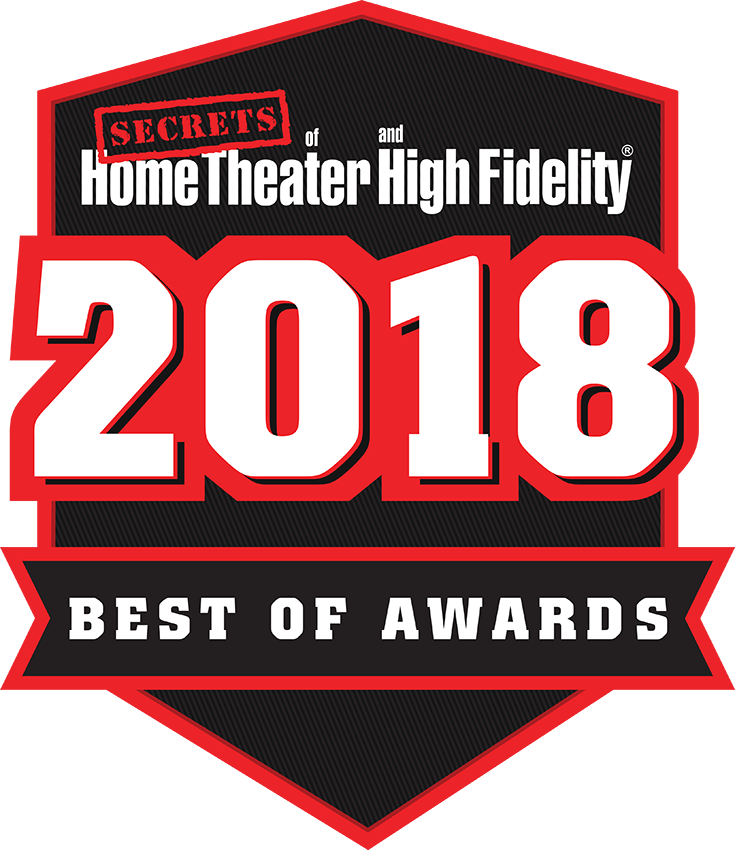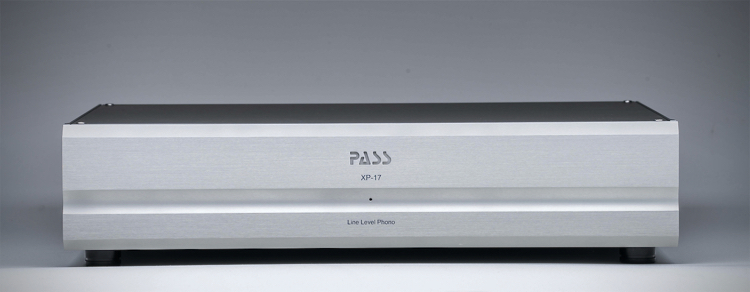
Founded in 1991, Pass Labs has built a very solid reputation for developing and manufacturing some of the finest audio components available. If you ask anybody in the know within the high end audio industry about Pass Labs, they’ll most likely talk about their trademark industrial design, high level of performance, and dedication to accurate music reproduction.
In keeping with that tradition, they have developed the XP-17 Phono Preamplifier to offer stunning clarity through the use of technologies developed in their ultra-high-end XS product line (XS Phono Preamp sells for $45K!), and put it all together in a relatively affordable package that will suit the needs of most analog-oriented customers. And if you’re the type who owns a variety of cartridges, or like to buy and sell them regularly to find that “perfect” fit, the XP-17 has the ability to handle just about any cartridge you can throw at it.
During my time with the Pass Labs XP-17, I have found that it has the ability to do everything that I want it to do, and then some. Looking for a huge soundstage? Yep, it’ll do that. Want to extract the finest of details? Check on that as well. Like dead quiet backgrounds with massive dynamics? You get that in spades.

Pass Labs Phono Preamplifier
- Numerous loading options for all types of cartridges
- RCA input, with both RCA and Balanced outputs
- Very low noise output
As I have previously stated, Pass Labs gear has been a part of my system(s) for a while now. I love the industrial design look to it, and I respect their direction and dedication to the high-end audio market. The brand adopted an early reputation for quality and innovation, and they have stuck to that same formula throughout the years. Those old-world values in a company are oftentimes hard to come by in today’s disposable world.
I had spent some time with Desmond Harrington and Kent English of Pass Labs at the AXPONA show in Chicago last year, and found that who they are in person, matches the company persona that you see and hear about. Professional, no-nonsense, and presentation that is free from overblown hype.
So when I saw that their popular and well-received XP-15 phono preamplifier was being replaced with an upgraded version in the XP-17, I knew that I wanted to have some time with it in my system. Pass Labs doesn’t make changes or upgrades very often, so I was confident that reviewing it would be worthwhile.
For those of you reading this review, you might wonder who the XP-17 is geared for. Given its $4,300 price tag, it’s definitely not intended for the first-time buyer into the vinyl playback market. Chances are, the person looking at this level has already gone through at least a few upgrade paths, and also has a nice turntable to go along with it. It’s not that you couldn’t match this up with a sub-$1,000 turntable; it’s just that you’d be more likely to be buying the XP-17 to go along with a higher-end unit that would work well together with it. A very good turntable and cartridge needs a quality phono preamplifier in order to bring out all of the details in the music. Likewise, if you’re running a high end phono preamp, you’ll want a turntable and cartridge that will compliment it as the two (turntable and phono preamp) are dependent in one another for the best playback and presentation.
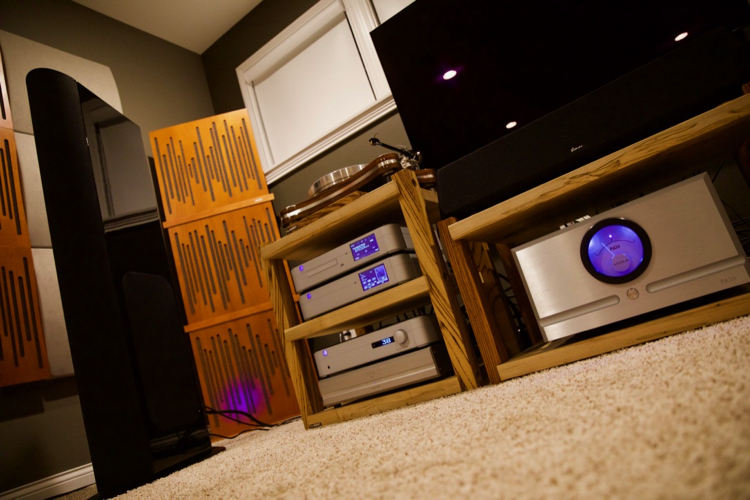
Power Consumption:
35 Watts
Gain:
76, 66, 56 dB Balanced; 70, 60, 50 Unbalanced
Output Impedance:
110 Ohms RCA; 220 Ohms Balanced
Input Impedance:
10 – 47K Ohms more than 200 values
Capacitive Loading:
100 – 750 pF
RIAA Curve Accuracy:
+/- .1 dB 20 – 20 KHz Passive / Active EQ
Distortion and Noise:
0.004%; Quad matched low noise symmetrical JFET input; Double shielded low noise toroid
Dimensions:
17”w x 12.5”d x 4”h @ 19lbs
MSRP:
$4300
Company:
SECRETS Tags:
Pass Laboratories, Pass Labs Preamplifiers, Pass Labs XP-17 Phono Preamplifier, Phono Preamplifier Reviews 2018, Vinyl Reviews, Preamplifier Review 2018
As I worked on this review, I stumbled a bit when it came time to write some of the technical features in this Design segment. As I repeatedly read through the material from Pass Labs, I concluded they did a fantastic job of summarizing the design without going into too many technical details. Given that, I’d like to share their information accordingly:
Secrets Sponsor
As associated equipment in the audio chain has improved we at Pass Labs found ourselves longing for an improved phono-stage with even lower noise, greater resolution and sonic ease than we had enjoyed with the Pass Labs earlier phono stages. The XP-17 takes what we learned from developing our premier product line and has brought some of those elements to a smaller, less costly package.
The XP-17 has a very accurate RIAA equalization curve. This curve is accurate to better than 1/10 dB across 10 octaves. The accuracy of this curve does not vary with an adjustment change of gain or cartridge loading. The XP-17 features gain adjustable from between 56dB and 76dB; a range sufficient to allow successful operation of not only high output moving magnet cartridges, but also the lowest output moving coil cartridges without the use of an auxiliary step-up transformer.
This extremely low noise / high gain structure of the XP-17 is capable of cleanly and quietly delivering in excess of 0.5V line level signal output with a phono cartridge input of 80 micro-volts. These are some of the best performance figures in the industry, and spectacular for a piece at this price point.
While my system went through some changes during the evaluation period, my final setup included the Pass Labs XP-17 phono preamplifier, PS Audio BHK preamplifier, VPI Industries Prime Signature turntable with Ortofon MC Cadenza Bronze Cartridge, Pass Labs X350.8 amplifier, and GoldenEar Technology Triton Reference Speakers . All components sit on my Massif Audio Designs stands (Ambrosia Maple platforms with Zebrawood legs).
During the review process, I also switched around some components including a Pass Labs XP-20 preamplifier, Sutherland Engineering 20/20 phono preamplifier, and Pro-Ject 6Perspex turntable with Sumiko Blackbird cartridge.

After spending some time with the well-written Pass Labs owner’s manual, I had a very good idea of where I needed to start to get the XP-17 matched up to the Ortofon MC Cadenza Bronze cartridge that was mounted on the VPI Prime Signature Turntable. Starting with the specifications on the cartridge, and referencing the chart provided in the owner’s manual, I was able to get a solid baseline for me to play around with a bit in order to come up with what I felt was the best overall balance.
An excerpt from the manual talks about how cartridge loading is not an exact science, and I thought it would be prudent to add that into my article:
Please understand the loading of a moving coil cartridge is a very inexact science at best, specific recommendations should be taken (and offered) very lightly. I encourage you to think separately from the cartridge manufacturer and choose your resistive loading values accordingly.
In addition to finding what settings would work best for my system, I also did some A and B comparisons between the single-ended and balanced outputs going from the XP-17 to my preamplifier. It didn’t take long at all to conclude that the balanced outputs were going to be my choice, as the additional 6dB of gain they provide created a more dynamic presentation.
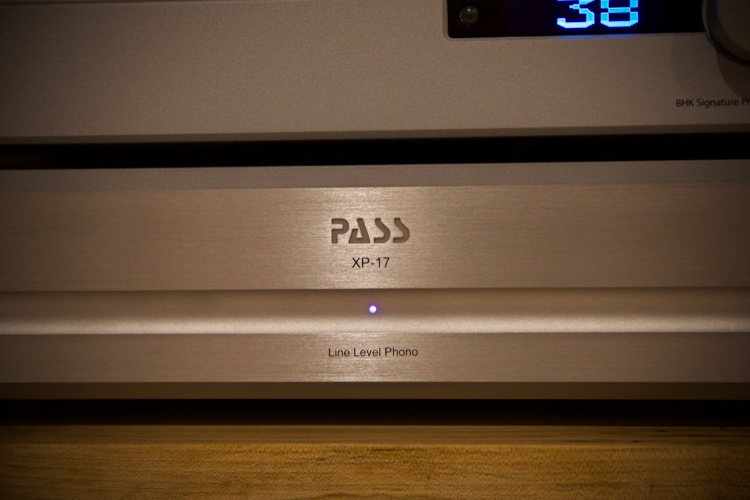
So the obvious question would be about how it sounds, right? In a nutshell, my system never sounded so open, realistic, and alive as it did with the combination of the Pass Labs XP-17 phono preamplifier teamed up with the VPI Prime Signature turntable. There’s a definite synergy between the two, and the Pass Lab’s ability to pass through the details that were extracted by the cartridge (without adding coloration) presented vinyl playback at its finest.
I found bass presentation to be quite strong, yet articulate and detailed, and background noise to be almost non-existent on my best LP’s. Highs were crisp and clear, without a hint of glare or harshness. The soundstage filled up the entire space, and provided appropriate depth and height. When I compared the analog setup to the same tracks in digital, I was able to tell that neither the Pass Labs XP-17 nor the VPI Prime Signature were adding or subtracting anything from the music. I would definitely categorize the XP-17 as neutral in its presentation.
While my listening habits usually focus around music with high dynamic range, impact, and (very) loud volume levels, I found the XP-17 to work equally well regardless of the music type. Given its neutrality, it will work well with everything from classical, to jazz to rock.
Secrets Sponsor
Now let’s take a look at some specific listening observations!

Vanessa Fernandez. Use Me. I’m a little late to the party on discovering her music, and the irony here is that I learned about her from a video I watched where Harry Weisfeld from VPI Industries was conducting a demo, and playing her album. I figured that if Harry was using it to showcase his equipment, then it’s something that I need to check out. She covers some popular songs, and she has plenty of material of her own as well.
She’s got a mix of jazz and blues, and the recording quality of everything that I have heard from her has been spectacular. In her title song Use Me, which is a cover from Bill Withers, I found her voice to magically hang in the air between the Triton Reference speakers, with the rest of the instrumentation presenting itself in a wall of sound across the stage. The bass notes were deep and refined, and the background noise was barely audible until I turned it up to ear-splitting volumes. Next up is the classic blues song I love you more than you’ll ever know. One of my favorite versions of this song is from a live performance from Gary Moore, where the focus is on his screaming guitar. In this version, it’s more of a focus on her amazing voice that comes through with absolute clarity on the high notes, without any harshness whatsoever. The guitar work is excellent in this recording, and you could clearly hear fingers sliding across the strings, as if the player was standing right in front of me. I know it’s cliché in audio reviews to say that I completely forgot I was reviewing gear as I got caught up in the music itself, but that’s exactly what the case was on this album.
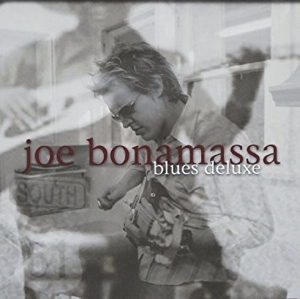
Joe Bonamassa. Blues Deluxe. My preferred way to listen to Joe is in his live concert videos in my theater. The live sound, the long guitar solos, and just being able to watch him do things on the guitar that nobody else is doing. He is arguably one of the absolute best guitarists around today. I’ve seen him several times in concert now, and just purchased tickets to see him at Red Rocks this summer (third row, center stage!).
Blues Deluxe is the rare studio album that I really enjoy. The title track, Blues Deluxe, is my favorite of them all and I have listened to it in many formats, and on a lot of systems. The very first time was at a friend’s house (Chuck Ellisor), who is the Founder of Genesis Audio in Gahanna, Ohio. It was played on his monstrous Sound Lab U1 speakers, being pushed by 2k watts a piece. The sound was huge, dynamic, and felt like a punch in the face. Since that moment, I was hooked.
This song has deep bass guitar notes with a high level of clarity and non-distorted lower reach. Playback also includes screaming, classic Joe guitar riffs without strain even at the highest volumes. Even at high volumes, the quiet passages had very little background noise. At about ¾ the way through the song, Joe goes off on one of his normal solos and just rips through the guitar in such a way that even if you’re hearing him for the first time, you know that you’ve never quite heard guitar like this. This song is just dripping with testosterone, and deserves both very high levels of volume, and a fine whiskey to go along with it.
Through my system, with the Pass Labs XP-17 leading the way, there are so many details extracted from the grooves in the LP; providing a moving listening experience.
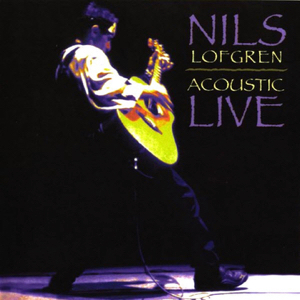
This is a very popular album for demonstrations because A) it’s a great performance, and B) the recording on the acoustic guitar in particular is absolutely stellar. There aren’t many recordings I’ve ever heard that give you the “you are there” feeling with the guitars standing right in front of you. Unfortunately, I’ve seen other audio journalists complain about demo rooms at shows playing it too much. You’re not going to hear that from this writer…keep playing Nils!
Most of the time you’ll hear references to the song Keith Don’t Go because it’s the most popular song on the album. Yes, it’s that good, and it’s the perfect way to introduce people to Nils’ incredible ability if they haven’t heard him before. But the subject here is his less known song Some Must Dream. Granted, the early parts of the song are a little slow, but when Nils breaks into a long solo, it will absolutely take your breath away on the right system and synergy of components. With the combination of the VPI Prime Signature, Pass Labs XP-17, and the mighty GoldenEar Triton Reference, it does much more than just do it justice. The level of detail and brilliance in the mids-to-upper levels in this guitar work are so stunning that if I closed my eyes, I would have thought that I was back at Chuck’s house listening to his mighty Sound Labs. Yes, through the help of the Pass Labs XP-17, my GoldenEar’s transformed into massive electrostatic panels! If there was a weak link in my system, this song and presentation wouldn’t have been nearly as impressive. True reference material indeed.
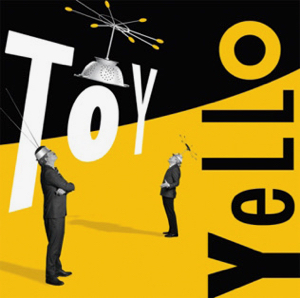
I’ve talked about this album in other reviews that I have done before, but I couldn’t do a full analog review without including it. For demonstrating huge dynamic swings, deep, accurate bass, and a huge soundstage, it’s hard to find a more complete album.
On side D of the album, it starts out with a bit of an odd track called Magma. It’s not as much of a “song” as it is a collection of sound effects featuring voices and a variety of instruments dancing across the soundstage. This would be a great track for checking phase, testing speaker placement, and simply to wow your friends. The entire width of my listening room (approximately 14’) is a wall of sound during the playback of Magma, with the effects varying in height and depth. And late in the track, you are greeted with some extremely low and powerful bass tracks that when played on the right system, simply make the hairs on your arms stand at attention. Mini-monitors need not apply for this album because you simply won’t get the full realization of how much low end can be engineered into the grooves of a record! Once again through the strengths of my VPI Prime Signature and Pass Labs XP-17 phono preamp, it truly plays the material in the way that the artist and production crew intended. While I’m sure you could extract more detail out of an album like this, you’d have to spend truckloads of money to do so.

THE PASS LABS XP-17 PHONO PREAMPLIFIER is a true reference-class piece that is capable of a very high level of neutral analog playback. And for the price of $4,300, I see it as a true bargain in the realm of high-fidelity equipment.
- Beautiful industrial design
- Huge soundstage
- Dead silent background
- Dynamics in spades
- Adjustability for any type of cartridge
- Adjustability from the front panel (although I realize this would increase cost!)
As I’m sure you can conclude from my article, I really like the performance and features that are packed into the Pass Labs XP-17 Phono Preamplifier. It allows all of the details in the LP to come through, but it doesn’t add any signature of its own. It also provides enough connectivity and adjustability to meet your needs no matter what kind of cartridge you may own (or want to own). And to top all of that off, it has impeccable build quality and great looks as well.
For those who can really appreciate vinyl playback and all that it has to offer, you’ll really enjoy the Pass Labs XP-17 Phono Preamplifier.
Highly recommended!



